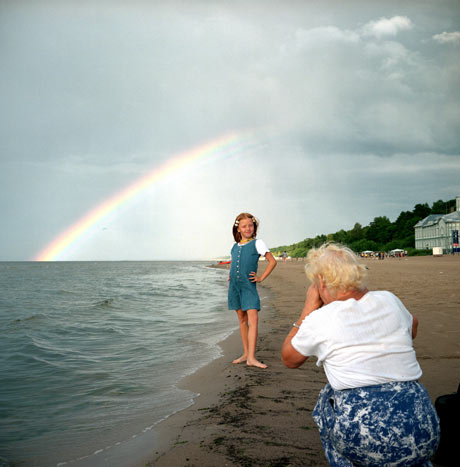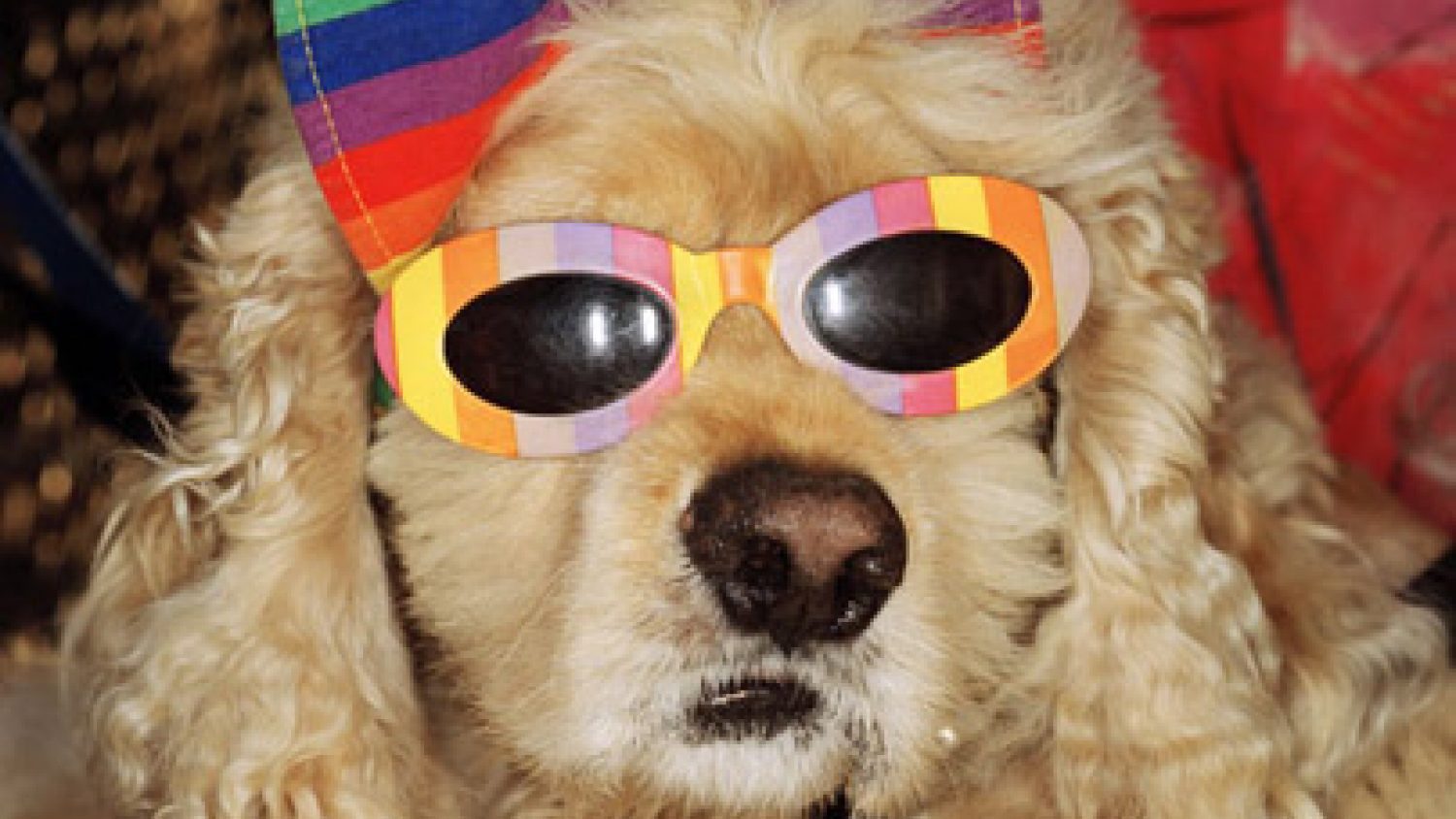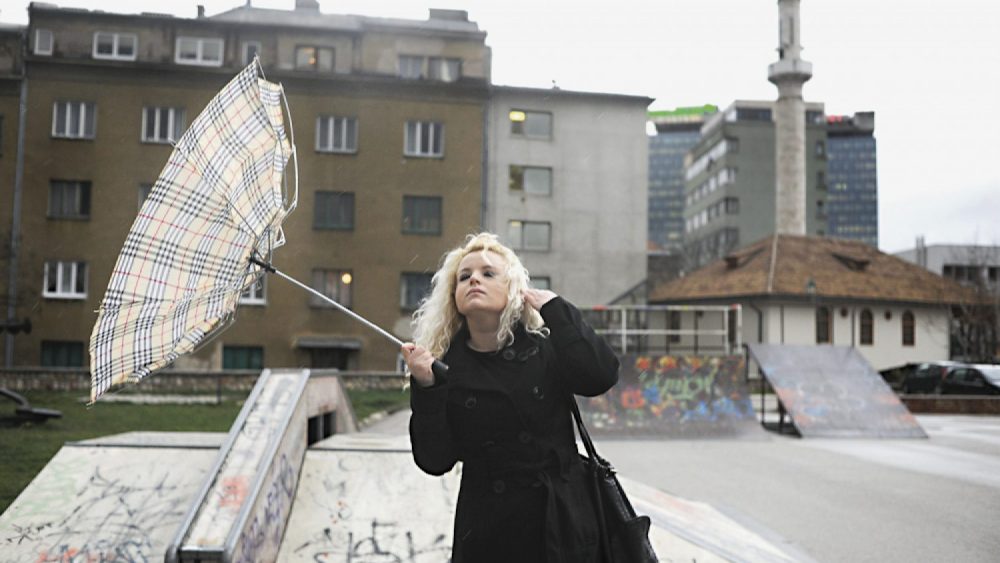10 minutes with Martin Parr
I’m not sure if anyone needs to be introduced to the British photographer Martin Parr (1952). It would rather seem a banality to explain what he does. Also in Arles, when I catch the photographer and we sit down for ten minutes, I express my concern if there is still a question he hasn’t yet answered. “Yes, I’m transparent!” he laughs. Nevertheless, if you need a presentation, please, check his and Magnum’s website.
Does photography in general and also yours have any role?
I’m in the entertainment business, I try to take serious photographs but I camouflage. Photography is a branch of entertainment business, there is money in photography – you can buy prints, go to the festivals and shows. I’m a serious photographer but I would never expect my work to change anything. Of course, we have a photographic culture but you’re preaching to be converted more or less. Despite the accessibility and democracy in photography.
Does your photography tell more about the society or about you?
My relationship to society, my understanding of it, that’s what it talks about.
How has the documentary photography changed since you are in the field and how has it influenced art photography, photo agencies?
There are many changes. The art field has embraced photography, the classic photo agencies are in decline because the magazines are in decline. The magazines used to be the main reason why people did these photos, it used to be one of the biggest businesses. Now that reason is gone. But the cultural market in documentary photography is still pretty big. It’s actually getting bigger – more photography shows, more festivals than ever before, more people are interested. There are millions of members on Flickr, all wanting to digest other people’s photos.
Would you then say that the documentary photography is now in fashion?
We always want to know about the world we live in, it’s this crazy changing place. But it’s not everything, there is art, fashion photography – call it what you want.
And talking about fashion photography, tell us how did you get into Urban Outfitters project?
I got asked to do it. I do fashion from time to time and if people pay me enough money I would do it. And I like the challenge of doing fashion – you have to work very fast and I like solving problems with photography.
Another project which is different from what you usually do – Goutte D’Or – about a Parisian district.
Yes, I was commissioned to do it. There is an overlap with commissions. I commission myself to do my own projects as well! I’m overwhelmed with things I want to do and things people ask me to do. I have to work out a timetable to do as much as possible.
You’re also very involved in curating. What qualities are you searching when looking for the photographers in a show or in a festival?
I’m looking for people who would bring something new to the party – interesting work, new, fresh ideas.
When referring to the word “fresh”, doesn’t it have an expiry date until the next show or festival?
Well if by then a work has been seen and have had a platform, people know about it, so it might still be fresh, but it might not be the right thing to bring to the festival. Festivals and exhibitions should be about discovery!
Tell us more about the exhibition From Here On you were co-curating in Arles. How was it to find the right artists to exhibit?
It’s a combination of all means – word of mouth, coming across something, finding on the internet. When we saw a possibility, we sent the names to each other and when we met, we looked at all these images and voted them.
Does the quality of image change per se with all the new tools and technologies we now have?
The quality on the internet is pretty poor, that’s the funny thing about it. But no one cares for it anymore. Well, I don’t, because it’s the spirit that counts. It used to be that the thing that counted most in photography was technique. Now you put up the camera and you don’t have to think about the technique, it’s all done for you. Just put it on auto and off you go!
What about the quantity then? One thing that struck me in the From here on show was the huge amount of works.
Then they need to be edited!
But do photographers edit so much now?
Some are good at it and some are less.
Is there a single image’s value then?
Of course! Icons are single images. Look at the Iraq war – they have great images of prisoners, for example! They’ve become iconic and they’re single pictures. But this exhibition is less about single images, more about groupings, sets and ideas. Icons take time to deliver, you don’t recognize an icon immediately, it takes time to mature.
As a collector and book lover, what is your guess about the art book industry in the future? Will it live thanks to the enthusiasts as you are or it has a wider market?
The book market is expanding as the audience of photography is growing and, despite the internet, people still want to hold a physical book. And all the photographers want their books to be published. With the print on demand and Blurb, it’s easier to make a book today and it’s continuing to grow. Photography is absolutely hot, exciting and interesting!
Is there a place for everybody then?
No, not at all. We need all the bad work to understand the good. You can’t just have good work, it’s impossible.
Could you give a Top 5 of best photobooks you’ve discovered lately?
No, because I recently did a Best Books of a Decade for Dublin Photography Festival, they can be found there. That’s my latest contribution to the ongoing debate.
What are you working on now?
I’m doing a big project in the Black Country in West Midlands, it’s a 4-year assignment.
Thanks for sharing your time and thoughts!
I prefer to be taking pictures than talking about them but it’s my pleasure!




